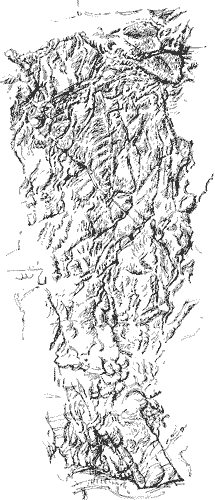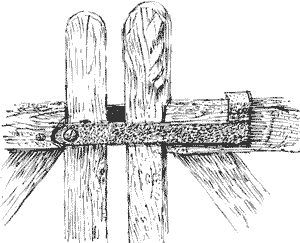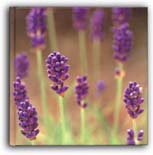
|
Sea-green Dragon SkinFriday, 21st February 2003, West Yorkshire |
![]()
![]()
![]()
![]() Rocks | History |
Workshop |
Links | Home
Page
Rocks | History |
Workshop |
Links | Home
Page
![]()

This algae-covered rock-face in the right-hand chamber of the Deer Shelter (see 16th January) is ribbed with bands of ironstone, deposited in cracks in the sandstone. The dark green surface is warty and granulated, cracked and folded, like the skin of some extinct reptile.
Leviathan
The first dragons to be mentioned in mythology were sea monsters. From Sumerian times onward they've had a bad press; they seem to exist primarily to be slain by the hero of the story - St George, Perseus . . . even our own Christian/Jewish God, Yahweh himself, isn't above boasting of his power over the fire-breathing leviathan, described in impressive detail in Job, chapter 40;
'His scales are his pride, shut up together as with a close seal. One is so near to another, that no air can come between them . . . The flakes of his flesh are joined together : they are firm in themselves ; they cannot be moved . . . The arrow cannot make him flee . . . Darts are counted as stubble : he laugheth at the shaking of a spear . . . He maketh the deep to boil like a pot : he maketh the sea like a pot of ointment.'
It seems that this sea monster was named for the character of its skin or its flesh; in Hebrew leviathan means 'that which gathers itself into folds'.
Dragons and serpents guarded sacred sites or treasures, like the Golden Fleece. They are associated with reincarnation and with oracles. They represent the forces of nature; the lucky Chinese dragons especially are spirits of the earth, air, fire and water.
The Gates of Dreams
 Every
time I enter and leave the Deer Shelter enclosure I lift this rust-pitted
iron fastening on the twin gates. The 'clank' as it drops on the scarred
timber is now a signature sound of the place for me, along with the calls
of jackdaws. I like the way the curved tops of the uprights echo the curved
arches of the Shelter beyond. They also remind me of the two stone tablets
of the Ten Commandments!
Every
time I enter and leave the Deer Shelter enclosure I lift this rust-pitted
iron fastening on the twin gates. The 'clank' as it drops on the scarred
timber is now a signature sound of the place for me, along with the calls
of jackdaws. I like the way the curved tops of the uprights echo the curved
arches of the Shelter beyond. They also remind me of the two stone tablets
of the Ten Commandments!
The second commandment seems to be a warning addressed especially at natural history illustrators;
Thou shalt not make unto thee any graven image, or any likeness of anything that is in heaven above, or that is in the earth beneath, or that is in the water under the earth
A likeness of a leviathan would be right out of the question. The God of the Ten Commandments also had a special dislike of hewn stone (also in Genesis, chapter 20), certainly for use in an altar:
for if thou lift up thy tool upon it, thou hast polluted it.
The rough-hewn stones of the Shelter, its pillars, its arched recesses and the fissured bedrock, which pre-dates the dinosaurs, give it an atmosphere of an ancient sacred site . . . with a strong pagan resonance.
The Spirit of the Place
In pagan antiquity every tree..had its own genius-loci—its own guardian spirit.
Magnus Pyke, (1908-1992)
 I
can't say I've exhausted the possibilities for drawing in this small but,
to me, special oval enclosure but I feel that I've caught, as far as I
can, what I feel is the essence of the place. I'm sorry to be finishing
here but it's time to be moving on. Appropriately I've got to the last
page in my square sketchbook (left).
I
can't say I've exhausted the possibilities for drawing in this small but,
to me, special oval enclosure but I feel that I've caught, as far as I
can, what I feel is the essence of the place. I'm sorry to be finishing
here but it's time to be moving on. Appropriately I've got to the last
page in my square sketchbook (left).
 A
golden sun is going down behind the boughs of the old pollarded ash as
I sit to write a few notes after I've finished my sketch of the gate.
Then I notice a pellet, just under 2 inches (5cm) long, lying on the turf
at the foot of the left upright of the gate. It's about the same colour
as the weathered wood of the gate.
A
golden sun is going down behind the boughs of the old pollarded ash as
I sit to write a few notes after I've finished my sketch of the gate.
Then I notice a pellet, just under 2 inches (5cm) long, lying on the turf
at the foot of the left upright of the gate. It's about the same colour
as the weathered wood of the gate.
 It's
a pellet of indigestible material coughed up, I presume, by some bird
of prey that had been sitting on the gate. I break it up; it is dry and
furry in texture but from the fine splint-like bones, the beak and small
breastbone that I find in it I guess that the furry matrix is in fact
feather.
It's
a pellet of indigestible material coughed up, I presume, by some bird
of prey that had been sitting on the gate. I break it up; it is dry and
furry in texture but from the fine splint-like bones, the beak and small
breastbone that I find in it I guess that the furry matrix is in fact
feather.
 A
sparrowhawk might have regurgitated it but I'd like to think that it was
a little owl. While I've been drawing here on perhaps 20 occasions during
the last two months I've had tantalising glimpses of what I assume is
a little owl. I heard its call on a couple of occasions;
A
sparrowhawk might have regurgitated it but I'd like to think that it was
a little owl. While I've been drawing here on perhaps 20 occasions during
the last two months I've had tantalising glimpses of what I assume is
a little owl. I heard its call on a couple of occasions;
'Weeeou! Weeiiou! weeiou! wweiiou!'
 One
morning it watched me from the branches of the pollarded ash until it
was chased away by a woodpecker.
One
morning it watched me from the branches of the pollarded ash until it
was chased away by a woodpecker.
As the owl is associated with wisdom it would seem an appropriate guardian spirit for this place. The twin pillars of the Shelter with their twisted markings also seem symbolic of wisdom. It's appropriate that it should have been watching me; a presence in the background that I never quite made contact with, just as I never can quite catch that elusive feeling of the genius-loci of this old place in my sketches.
A Gift from the Gods
If this is a little owl pellet, I'll take it as a parting gift from the guardian spirit of the Shelter! In ancient Rome auspices, later known as augurs, were those who interpreted signs from birds. Auspice in Latin means 'to look at a bird'. So what message does this pellet hold for me? I think it could be telling me that it's about time I got back to studying natural history!
 The
little owl is an introduced species in England. The first attempt at introduction
was at Walton Park, 5 miles to the north east of Bretton. The Victorian
naturalist Charles Waterton (1782-1865) bought
twelve at the bird market in Rome (yes, the Italians used to eat them!).
Unfortunately seven of them died on the long stage coach journey back
to Yorkshire but he released the five surviving birds in the Park at 7
p.m. on the 10th May 1843.
The
little owl is an introduced species in England. The first attempt at introduction
was at Walton Park, 5 miles to the north east of Bretton. The Victorian
naturalist Charles Waterton (1782-1865) bought
twelve at the bird market in Rome (yes, the Italians used to eat them!).
Unfortunately seven of them died on the long stage coach journey back
to Yorkshire but he released the five surviving birds in the Park at 7
p.m. on the 10th May 1843.![]()
![]() Next page |
Previous
page | This
day two years ago | This month |
Nature Diary |
Home
Page
Next page |
Previous
page | This
day two years ago | This month |
Nature Diary |
Home
Page
![]()